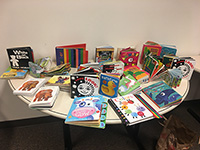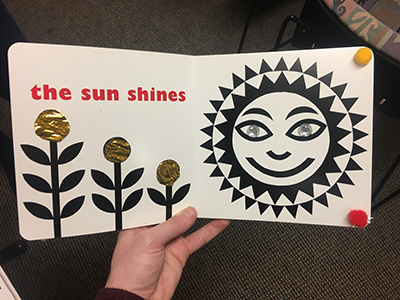Adapting Books; Where Community and Creativity Connect (OR UCEDD/LEND)
August 26, 2019

|
This year as a LEND Fellow at the Institute on Development and Disability at Oregon Health and Science University, I was given the opportunity to spend time creating a leadership project that combined several passions of mine; community engagement, crafts, and pediatrics! With the support of an awesome interdisciplinary team through the Early Access to Assistive Technology Clinic at the Child Development and Rehabilitation Center and Oregon Go Baby Go, I was able to partner with local organizations to host "Adapted Book Nights." At these events, therapists, clinicians, teachers, and parents meet in community spaces to adapt board books for children with motor and or visual impairments. 
This project has been a fascinating way for me to engage with the community. I have learned that when speaking about "adaptations," everyone has a different definition. There are countless ways to adapt books, and I have been attempting to stress to other providers and parents to consider the adaptations and be purposeful in their craft. I have also been blown away with the creativity and thoughtfulness of providers, parents, and community members in supporting this project. It is empowering for parents and family members of children experiencing disability to make their own "adapted" tools to help their child engage with their world. There's nothing fancy or expensive about these books, but they are made with love and creativity. By making the books, families and providers join together in a common goal, which is therapeutic in and of itself. When the child finally has a book which was made specifically for him or her that is fun to touch, look at, and share, it is a powerful moment of inclusion and participation.
For more information on how to adapt books, check out this tutorial:
https://www.youtube.com/watch?v=uhrLDpT0Dek







